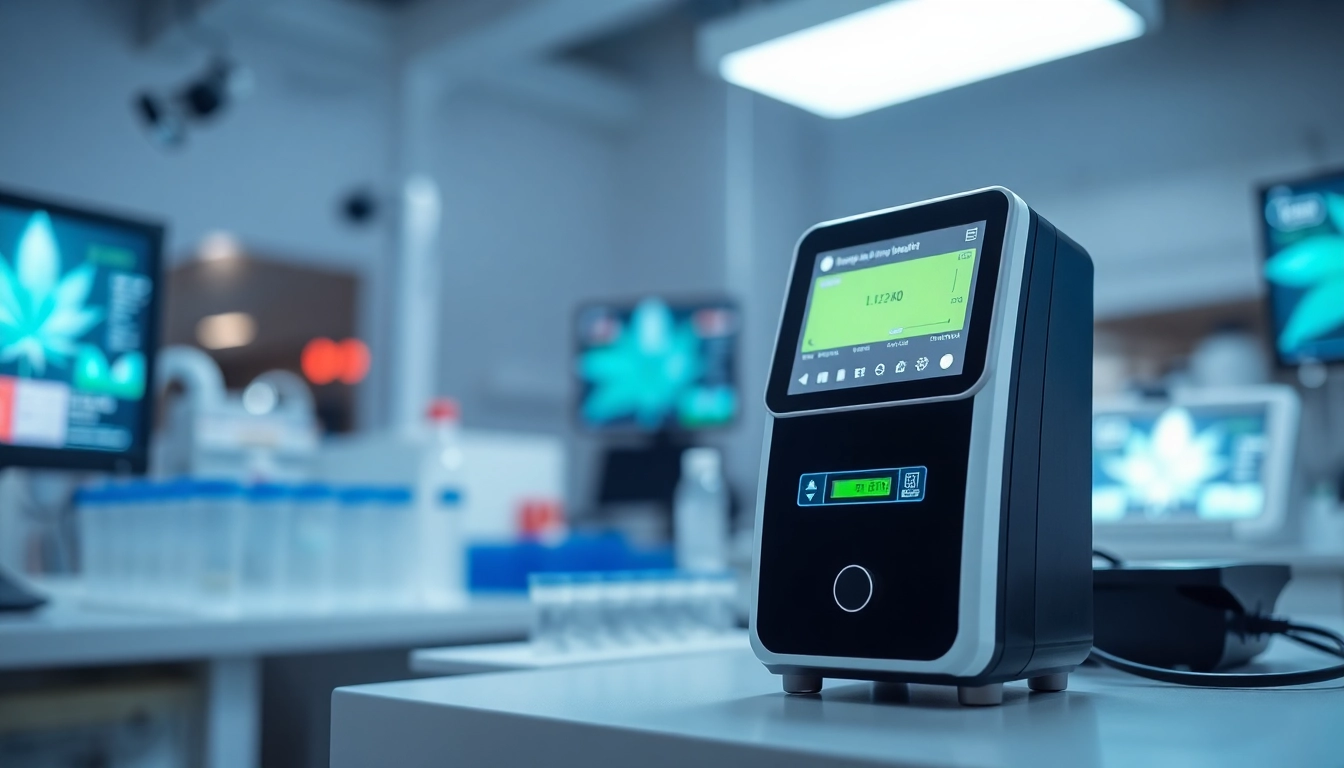Introduction to Marijuana Impairment Testing
As the landscape of marijuana legality continues to evolve across the United States and many parts of the world, the need for effective methods to assess marijuana impairment has become increasingly critical. Unlike alcohol, for which Blood Alcohol Concentration (BAC) serves as a clear measure of impairment, marijuana presents unique challenges. The absence of a universally accepted marijuana impairment test complicates road safety and workplace regulations, creating a pressing need for reliable marijuana impairment test methodologies. In this article, we will explore the various aspects of marijuana impairment testing, current techniques, legal considerations, emerging technologies, and the future outlook for testing in this pervasive sector.
What is marijuana impairment?
Marijuana impairment refers to the decreased ability to safely perform tasks due to the consumption of cannabis, particularly regarding its active compound, tetrahydrocannabinol (THC). THC affects cognitive and motor functions, leading to potential safety issues, especially in activities such as driving. Key indicators of marijuana impairment include delayed reaction times, impaired judgment, and reduced coordination.
History of impairment testing
Historically, marijuana impairment testing has been fraught with difficulty. Unlike alcohol, which has a well-defined correlation between consumption levels and impairment, THC’s effect varies significantly among individuals. The first attempts at marijuana testing often relied on subjective observations, where law enforcement officers would evaluate the driver’s behavior and appearance, leading to inconsistencies in enforcement. Over the years, various methods, including field sobriety tests and chemical analyses, have emerged, but each has its limitations.
Need for accurate testing methods
The increasing legalization of marijuana for both recreational and medicinal use raises the stakes for accurate impairment testing. Employers and law enforcement agencies demand reliable methods to ensure public safety without undermining individual rights. The absence of standardization in testing methods has resulted in varying implementation across states, making accurate and defensible testing paramount.
Current Testing Methods for Marijuana Impairment
Overview of existing tests
Current methods of assessing marijuana impairment include field sobriety tests (FSTs), saliva tests, urine tests, and blood tests. FSTs typically involve tasks like walking in a straight line or following a moving object with the eyes. These tests evaluate motor skills and cognitive functions. On the chemical testing side:
- Saliva tests: These can provide rapid results but often only indicate recent use rather than impairment.
- Urine tests: While common in employment settings, urine tests primarily detect THC metabolites which can linger long after impairment has subsided.
- Blood tests: These are considered more definitive but are invasive and do not always correspond to impairment levels due to variability in individual tolerance and metabolism.
Challenges in testing for THC
One of the prominent challenges in testing for THC is the lack of a direct correlation between THC levels and impairment. Unlike alcohol, where a blood level can indicate impairment effectively, THC’s effect varies per individual, influenced by factors such as chronic versus occasional use, the method of consumption, and individual tolerance levels. As stated in a recent report from the American Bar Association, “no one test or measure currently exists to demonstrate driver impairment resulting from THC.” This statement highlights the urgent need for improved testing methods.
Limitations of blood vs. urine tests
Both blood and urine tests contain inherent limitations. Blood tests, while accurate in determining the presence of THC, may not effectively indicate current impairment because THC can remain in the bloodstream long after effects have worn off. In contrast, urine tests can detect the metabolites of THC that stay in the body long after psychoactive effects have faded, making them unreliable indicators of impairment at the time of testing. This discrepancy creates potential issues in legal scenarios, where results may not accurately reflect a person’s ability to perform tasks safely.
Legal Perspectives on Marijuana Impairment Testing
Variations in state regulations
The legal framework for marijuana impairment testing is incredibly varied from state to state. Some states have implemented strict THC limits, similar to BAC laws for alcohol, while others have adopted a more lenient approach. States like Colorado and Washington have set specific nanogram limits in the blood, usually ranging between 1 to 5 nanograms per milliliter, yet these limits often lead to legal ambiguities when applied in impaired driving cases.
Impact of legalization on testing policies
The increasing legalization of marijuana has prompted states to reevaluate their approach to impairment testing. In places where marijuana use has been legalized, employers grapple with how to maintain drug-free workplaces while also adhering to labor laws that protect employees’ rights. Employers may implement drug testing policies that combine observations of behavior and chemical tests, but balancing these interests often leads to legal complications.
Employer rights regarding drug testing
Employers possess the right to enforce drug-free policies, but the complexity arises in defining impairment. Companies operating in legal marijuana states often find themselves in ethical and legal quandaries: they want to ensure employee safety but also respect the rights of users. Court cases hinge upon the distinction between a positive test (detecting THC) and actual impairment at the time of testing, creating an ongoing challenge for businesses.
Emerging Technologies in Marijuana Impairment Testing
Innovations in real-time testing
While traditional testing methods have limitations, emerging technologies offer promising alternatives. Innovations in real-time testing range from advanced saliva testing kits to breath analyzers specifically designed to detect THC levels. These technologies aim to provide immediate results that reflect impairment levels at the time of testing, making them more relevant for roadside assessments. Companies like Gaize are at the forefront of developing real-time impairment testing solutions, utilizing cutting-edge technology to offer quick and reliable results.
The role of mobile testing applications
Mobile applications are increasingly being integrated into testing protocols, offering a user-friendly approach to assessing impairment. These apps can guide users through standardized tests or utilize portable devices to measure impairment levels. The considerable potential of mobile technology lies in its accessibility and convenience, which could lead to wider adoption of testing protocols in both workplace and roadside scenarios.
Comparative efficacy of new devices
As new devices become available, evidence of their efficacy is critical. Studies indicate that some devices can accurately assess impairment levels through real-time metrics, yielding results comparable to traditional methods. However, further research is needed to establish standardized protocols and promote these testing methods widely across the states.
Future Outlook for Marijuana Impairment Testing
Research directions in THC detection
The future of marijuana impairment testing hinges on significant investments in research and development. Ongoing studies seek to identify more reliable indicators of impairment and validate emerging testing technologies. Advancements in neuroimaging, for example, have shown promise in assessing cognitive function and impairment, potentially providing objective measures that correlate with performance capabilities.
Potential for universal testing standards
The creation of universal testing standards could lead to a more cohesive framework for addressing marijuana impairment. This would involve collaboration between legal experts, medical professionals, and regulators to define acceptable THC levels and testing methods. As public understanding and opinions on marijuana continue to shift, establishing clear testing protocols is essential to protect public safety while respecting individual rights.
Community impact and education efforts
Community education surrounding marijuana use and impairment is crucial in shaping future policies. Increasing public awareness of potential impairments and the risks associated with marijuana use can lead to more responsible consumption patterns. Programs that educate both employers and employees on marijuana impairment, testing protocols, and workplace safety will help mitigate risks and foster safer environments.



